Cat Twitching In Sleep: What Are The Possible Causes?


Sleep is quite important for a cat. They sleep for almost 18 hours per day. A cat twitching in sleep could have various meanings, or it could be a sign of some underlying issue that you need to investigate.
However, they do not sleep in one long period like we do. They sleep in multiple short sessions through the night. This is known as polyphasic sleeping. You will notice their whiskers quivering, paws twitching, or their tail flicking in their sleep.
Stages Of A Cat’s Sleep
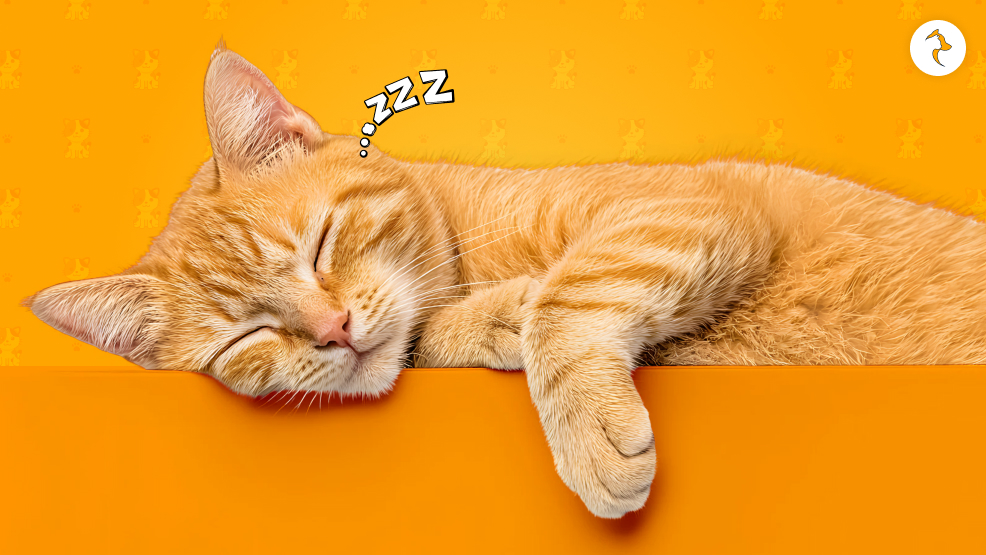
A cat’s sleep acts as a recharging factor for them; it helps them maintain their immune system and their overall well-being. There are usually three to four stages in an adult cat and kitten, respectively.
1. Catnaps
Catnaps are usually very light and short in nature. During this sleep stage, the cat, although sleeping, are aware of its surroundings. While you might think that your cat is sleeping, its defence system is on point and will attack if they sense any danger.
Using catnaps as a defence mechanism is primarily used by wild cats, but these tendencies are passed on to domesticated cats as well.
2. Light Sleep
The stage of light sleep lies somewhere between catnaps and deep sleep. The awareness level cat’s during this stage, the cat is still able to attack if it senses danger. The average time it lapses during light sleep is about 25 minutes.
3. Deep Sleep
Deep sleep, or what is normally called REM sleep (Rapid Eye Movement), is a stage that lies between light and deep sleep. But it is a shame that this stage only lasts for about 10 minutes, but the cat twitching in sleep happens in this stage as well.
But why do cats twitch in their sleep? The twitching happens when the cat is likely to be dreaming; when this happens, the cat becomes hard to wake up. If you want to make that experience more pleasurable for your cat, then make the perfect bedding for your cat.
Set up a bed or even a padded raised area for your cat to sleep. To provide a more comfortable REM sleep experience for your cat, remove any other stimulus from the surrounding, like kids and other animals.
It should be noted that the bedding area should be kept in a cooler area to make it more comfortable for your cat. The room shouldn’t be too cold, as the cat might roll up to sleep and might feel uncomfortable. Cats usually sleep more comfortably in warm temperatures.
4. Activated Sleep
Kittens achieve this fourth stage of the sleep cycle, not usually by adult cats. This is when the kitten activates the nervous system and is at rest during sleep. This is the stage when the kitten squirm, cries and twitch more than the average time.
Just like any other nerve firing in smaller animals, this helps to develop their nervous system. So it is very important that you never wake a sleeping kitten up. It is important that these kittens need a lot of rest and sleep to develop their nervous system and gain energy while sleeping.
What is Feline Hyperesthesia Syndrome?
It is still a matter of debate among experts and vets about the effects of Feline Hyperesthesia Syndrome and what it means. Hyperesthesia is a triggering syndrome in cats that occurs from doorbells, touching sensitive body parts of cats, and changing litter and food.
Some people believe it is a mental problem that can cause seizures and obsessive-compulsive disorder.
Feline Hyperesthesia Syndrome Symptoms You Need To Know
Feline Hyperesthesia Syndrome has different effects on different cats, and it happens in bizarre times. The intensity and erratic nature are also different in different cats.
The erratic behaviour also includes:
- Furious tail-licking
- Agitated demeanour
- Frantic leg, back and tail licking
- Running the zoomies (super duper fast)
- Acting all “possessed”
- Biting its tail, back and legs
The Feline Hyperesthesia Syndrome has a few symptoms such as:
- Fast Breathing
- Unusual vocal noises
- Pupil dilation
- Increase in saliva
- Ripping the fur and skin from its back
Why Is My Cat Twitching In His Sleep?
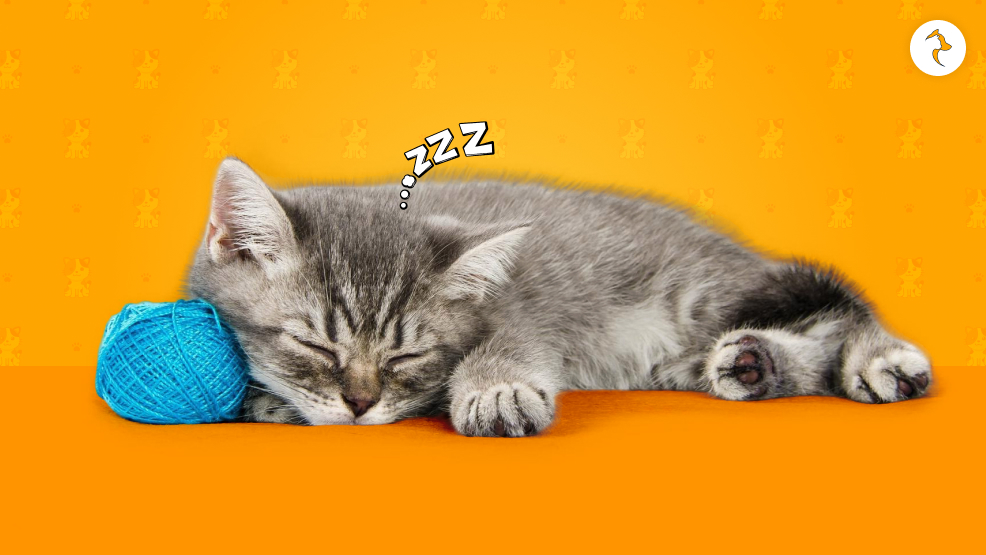
It is not difficult to notice that my cat is twitching in his sleep, but why is that happening? Although the chances of him dreaming in his sleep is quite possible, there are other chances as well. Twitching and turning in your sleep while dreaming is quite possible.
The process of REM sleep and the stage of dreaming can occur only in a matter of 25 minutes.
During the stage of dreaming, the effects are,
- Paws moving
- Meowing
- Twitching ears, nose, and whiskers
- The mouth is moving even though silent meowing
Cat twitching causes
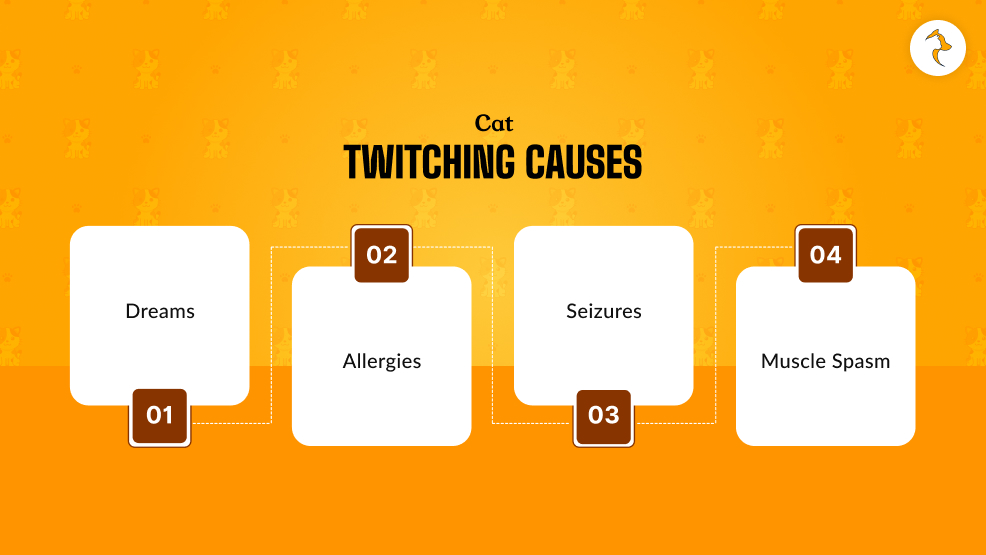
There are various possible causes behind a cat twitching as they sleep. Let’s check what those are:
Dreams
Just like we humans go through Rapid eye movements (REM), cats do as well. There are phases of REM and non-REM cycles while they are sleeping. Cats have similar brain activity to humans, so they might also dream during the REM phase.
They can have mild twitches while they are in the REM phase, which could be related to their dreams. But small twitches of the tail, face, ears, and legs are common and nothing to worry about. But if this is something non-related to dreams, then this could be a cause for concern.
Allergies
If you find your cat twitching during their sleep and they suddenly wake up and start grooming themselves, they could mean that there is something on their skin that is bothering them. It might be fleas, skin infections, matted fur, or allergies. It is important that you check your cat for fleas regularly and keep their coat clean.
If you find your cat itching their ears, it might be because they have developed some kind of ear infection or have ear mites. Ear infections and ear mites create a type of waxy debris in their ears, so check their ears regularly.
Seizures
Cats who get seizures show signs like shaking, tremors, twitching, and spasms. Seizures often affect brain activities like waking up or falling asleep. their limbs might get rigid, or they might also lose control of their bladder or bowels. If you think your cat is having a seizure, take them to a vet immediately.
Muscle spasm
Muscle spasms in cats also look like twitches. Actual spasms are a lot worse than a few flicks and kicks that a cat does while they are sleeping. Toxins like permethrins are responsible for causing spasms. These are difficult to differentiate, so the best you can do is take a video and show it to your vet.
Is My Cat Twitching In Sleep Or Having A Seizure?
If you are trying to wake up a cat twitching in sleep, but is constantly failing, then it could be the case that my cat is twitching in sleep and is actually having a seizure. In such a case, you need to immediately consult and contact your vet.
When a cat is having a seizure, the twitching becomes twitchier with a jerky movement. But when he is dreaming, the twitching is calmer.
To rule out seizure, you should keep a close eye on your cat when it is twitching.
- Muscles stiffening on the limbs
- Difficulty in waking it up
- Jerky moving
- Changed eating habits
- Exhaustion and fatigue
- A foamy and liquidy substance around the mouth
How Does A Vet Diagnose This?
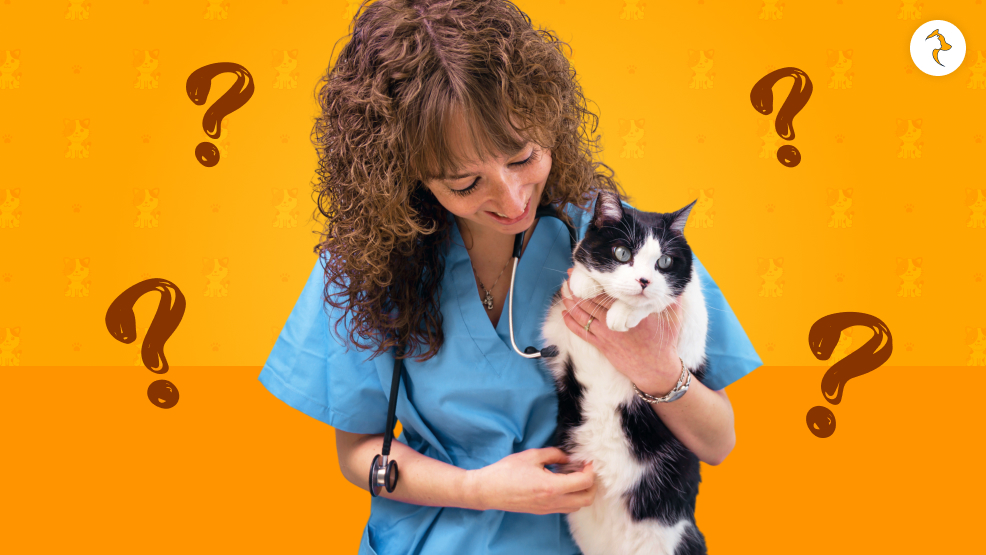
If your cat is twitching more than usual or their muscles are trembling when they are awake, you need to take them to a vet. They will run a lot of diagnostic tests to understand the reason behind it.
They generally start with a thorough physical exam and take a look at the medical history of the cat. Moreover, if you have noticed any unusual signs, you need to share that with the vet. These signs could include:
- How often are they twitching
- Which part of their body is affected most
- Whether this happens only when they sleep or when they are awake as well
Since this can be episodic, this mght not happen when you are visiting the vet. If you can, make a record of your cat when they are twitching so you can share it with your vet. This will help them assess the issue and how severe the condition is.
Common Diagnostic Test
To figure out what is going on with the cat, vets often recommend some tests. This is to find out whether they are dealing with a metabolic imbalance, infection, or neurological issues.
- Imaging: If the vet suspects that thai is happening because of some underlying issues like muscle disorders or nerve damage, they will recommend MRI, ultrasound, or X-rays to get a clear idea of what is happening.
- Bloodwork: a biochemistry panel o complete blood cound and electrolyte test can detect imbalances, inflammation or infections which can be the reason behing twitching.
- Urinalysis: Vets often recommend testing a urine sample to reveal issues with metabolic disorders, dehydration and kidney function.
Treatment Options
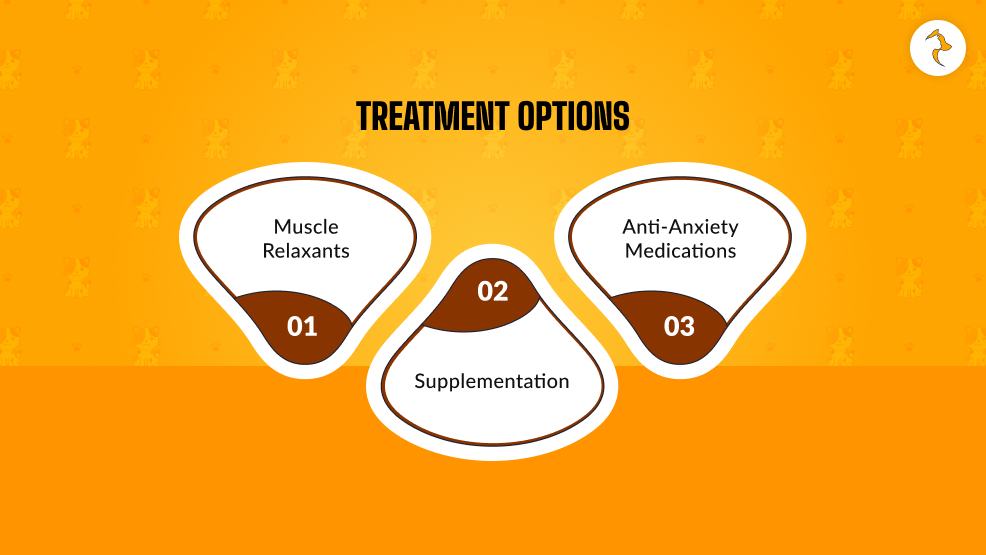
After the diagnosis, and finding out the reason behind your cat twitching,t hey determine the treatment option. The treatment options often inlude medications, surgery and other methods as well.
However, if there is no cause determined, they will just prescribe medicines to reduce their trembling. Here are a few common treatment options that people use for muscle trembling.
1. Muscle Relaxants
Vets often recommend drugs to relax the muscles, which help in reducing and eliminating the tremors. However, you have to ensure that you give the proper dose the vet has recommended depending on the weight and size of the cat and their physical condition.
2. Supplementation
If there is any kind of an imbalance or a deficiency because of the trembling, the vet might recommend some supplements to restore the nutritional balance of your cat.
3. Anti-anxiety Medications
If the reason behind their twitching is psychosomatic, then the vet will recommend the medicines the improve the mental state of the cat. Moroever, proper dosing is required to help a cat, and also to check that there are no side effects to this.
Be Careful Of Their Twitching
Cat twitching in sleep is not always serious. Sometimes it is a normal sign of a cat dreaming. However, severe twitching can be a sign of underlying issue like seizures, neurological disorder, or hyperesthesia syndrome.
So, if you see persistent twitching along with some other signs of distress, you need to take them to a vet.
Read Also:





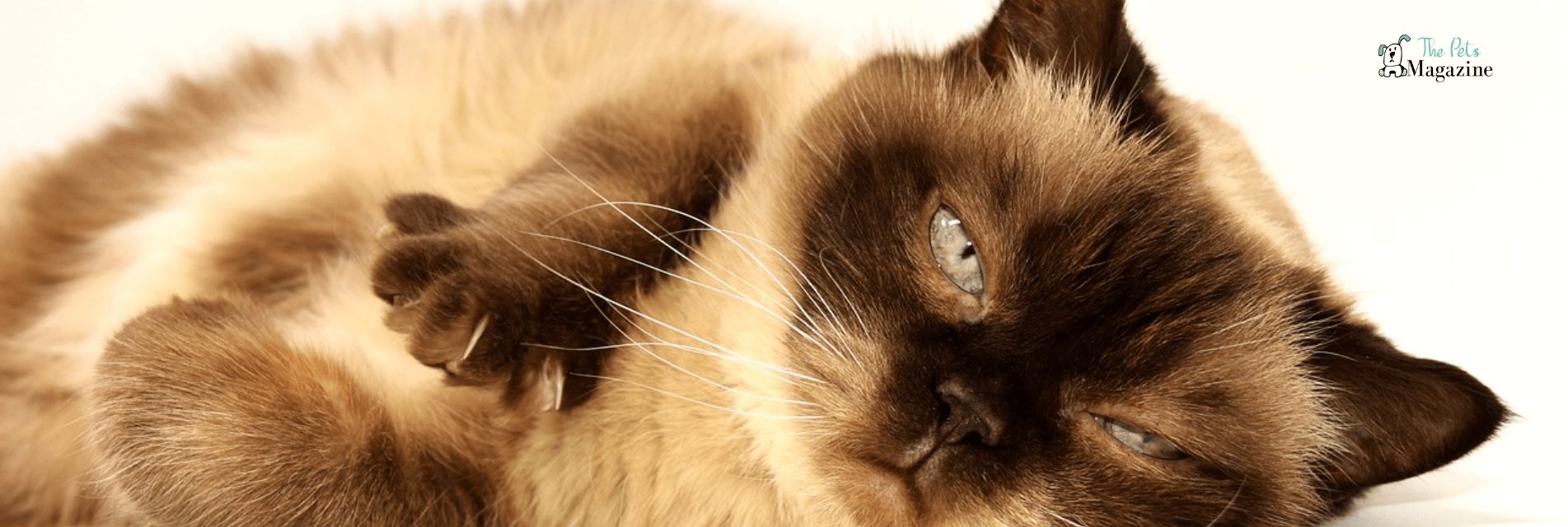

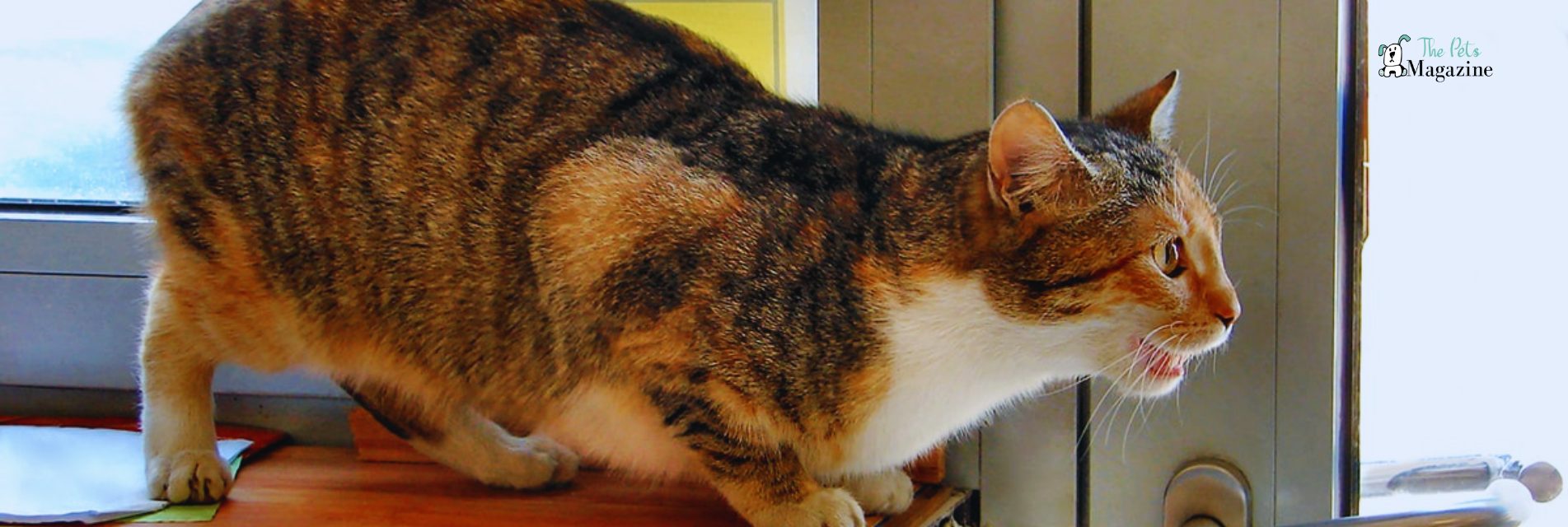
All Comments
Benito Curbeam
28 July, 2023
I need to to thank you for this fantastic read!! I definitely enjoyed every bit of it. I've got you bookmarked to look at new things you post…
Reply